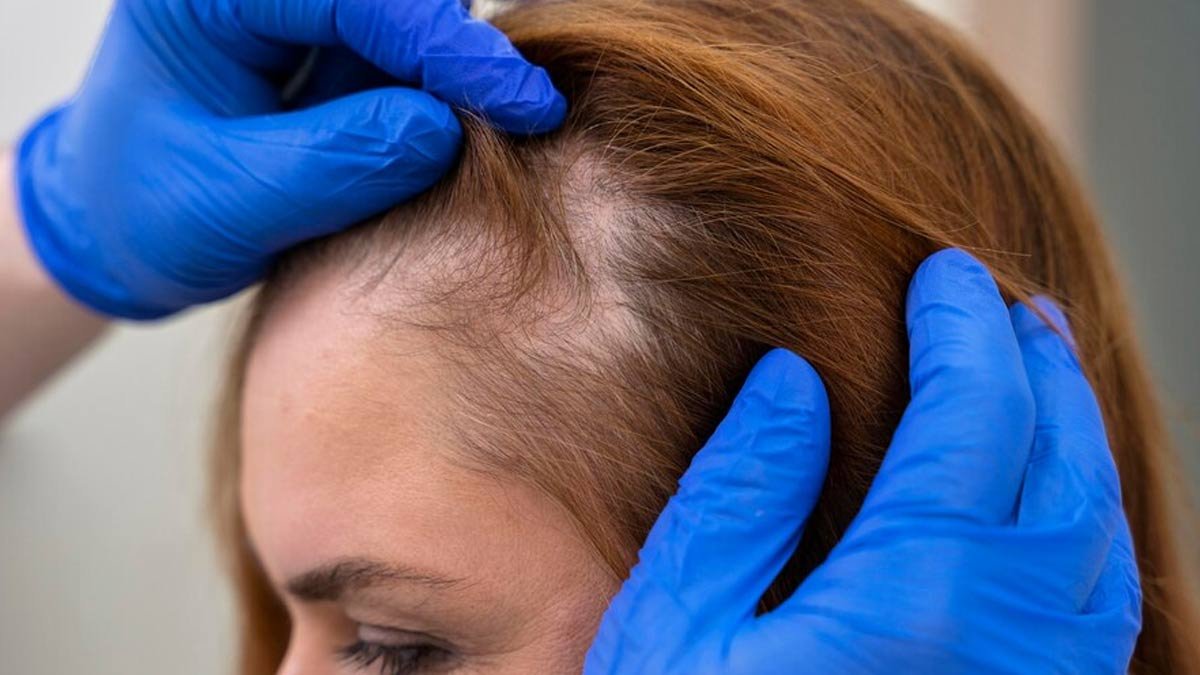Hair loss is a stressful and frustrating experience. It can affect people of all ages and genders, and the causes are varied. While discussions about hair loss often center around genetics and hormones, there’s another potential cause lurking in the shadows: Vitamin D deficiency.
How Vitamin D Deficiency Causes Hair Loss
Also known as the “sunshine vitamin,” Vitamin D is essential for a variety of bodily functions, including bone health, immune function, and mood regulation. But did you know that Vitamin D also plays a role in keeping your hair healthy and growing?
According to a study by the European Academy of Aesthetic Dermatology, vitamin D receptors are found in hair follicles, the tiny pockets in the scalp where hair growth occurs. These receptors help regulate the three-phase hair growth cycle.
- Growth phase (anagen): This is the active stage where new hair cells are produced, determining the thickness and length of the hair.
- Catagensis (transitional): A short period during which hair growth slows down and prepares for hair loss.
- Telogen (resting phase): The hair follicle is in a dormant state and the hair will eventually fall out and new hair will grow.
According to a study published in the Journal of Aesthetic Dermatology, vitamin D deficiency can disrupt this delicate cycle. When your body doesn’t have enough vitamin D, the anagen phase shortens and more hair follicles enter the resting phase early. This imbalance can lead to increased hair loss and overall thinning.
The relationship between vitamin D deficiency and hair loss
Research has found a link between low vitamin D levels and certain types of hair loss.
- Alopecia Areata: This autoimmune disease causes patchy hair loss. A 2019 study published in the Indian Journal of Dermatology Online showed that people with alopecia areata have significantly lower vitamin D levels than those without the condition.
- Male pattern baldness: It is the most common form of hair loss and affects both men (androgenetic alopecia) and women (female pattern baldness). A paper by Pakistani researchers found a link between reduced vitamin D3 and male pattern baldness, suggesting that vitamin D deficiency may play a role in its development.
Read also: Suffering from hair loss or grey hair? Experts recommend Ayurvedic herbs to try
Diagnosis of Vitamin D Deficiency
If you’re suffering from hair loss and think that vitamin D deficiency may be a contributing factor, the first thing to do is see your doctor for a blood test. This simple test can measure your serum vitamin D levels and determine if you have a deficiency.
If your doctor confirms a deficiency, they will recommend appropriate treatment, which may include:
- Vitamin D supplements: Taking a daily or weekly supplement can help raise your vitamin D levels to the recommended range.
- Dietary changes: Consuming foods rich in vitamin D, such as oily fish, egg yolks, and fortified milk, can help increase your intake.
- Exposure to the sun: Moderate exposure to sunlight helps stimulate the skin’s production of Vitamin D. However, be careful of excessive sun exposure and the risk of sunburn.
Read also: First-ever aqueous cholecalciferol injection launched: How to address vitamin D deficiency
Supplementing Vitamin D Levels
Addressing vitamin D deficiency may be beneficial for your hair’s health, but be sure to consult with your doctor before taking supplements or making drastic changes to your sun exposure habits. Your doctor can evaluate your personal needs and recommend the safest and most effective approach for your situation. Working with your doctor to explore all options can help restore the health and shine of your hair.

